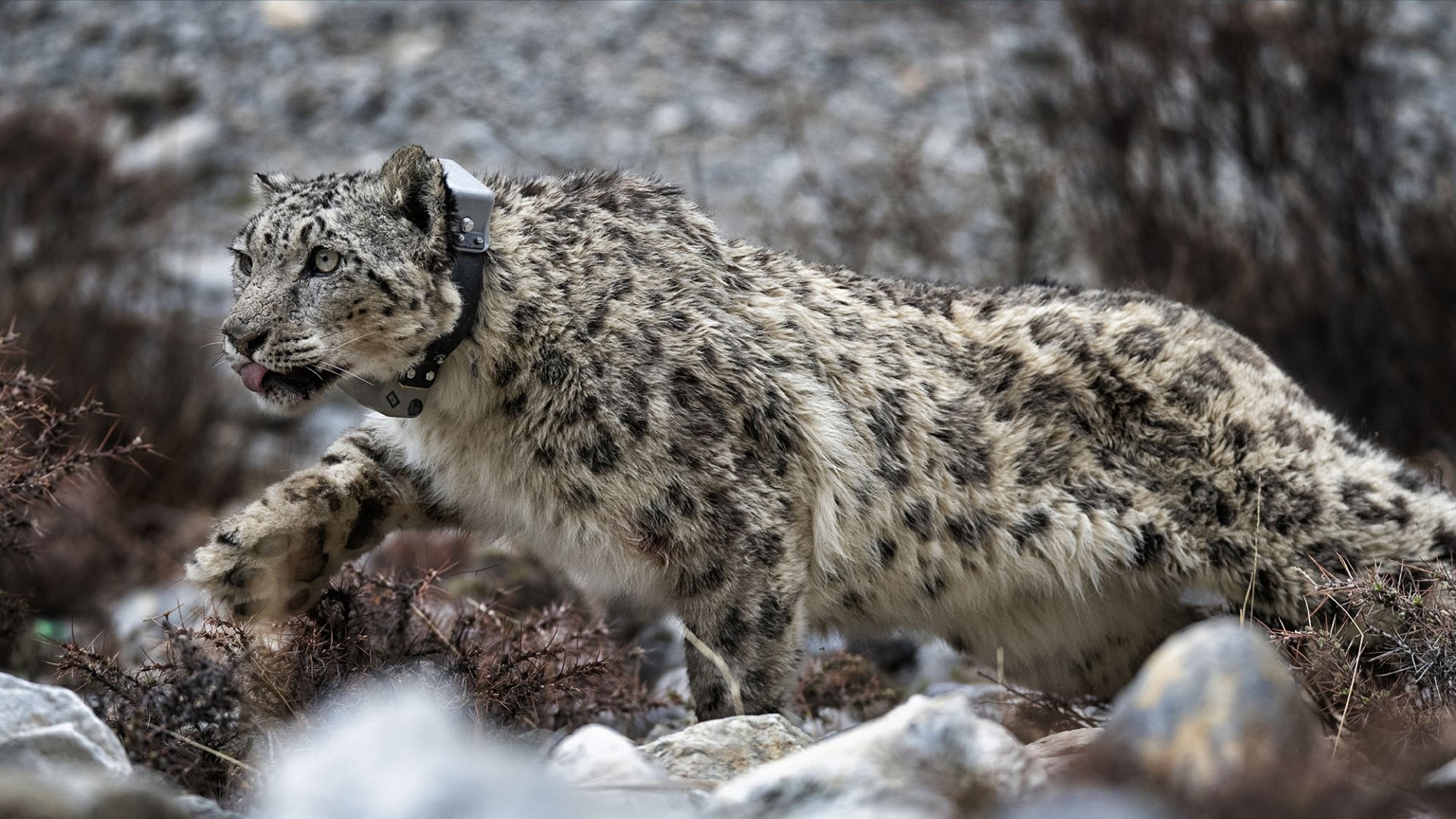Wilderness | wildlife | snow leopard | conservation | mountains

Peter Matthiesen’s 1978 book The Snow Leopard—considered one of the best travel narratives—is a classic that many Nepalis may not be aware of. It also drew international travellers from different parts of the world to the country’s hidden Dolpo region. One of the reasons—the region’s elusive creature, the snow leopard, and the author’s account of his search for the mysterious big cat.
In the 2013 adventure drama 'The Secret Life of Walter Mitty', its fictional photojournalist describes the elusive creature as, ‘Beautiful things don’t ask for attention’ and chooses not to photograph when it gives a rare sighting.
Now a study shows that Nepal is home to 397 snow leopards (Panthera uncia) with the population ranging between 334 and 476 individuals, about 12-14% of global population (7-8% of global population at 397)—a national estimate based on a survey by the country’s two agencies—Department of National Parks and Wildlife Conservation Areas and Department of Forests and Soil Conservation.
This proportion is even more striking considering that Nepal hosts just about 1.6% of the global distribution range (global habitat suitable for snow leopards), estimated to be around 1.8 million sq. km, suggests the report.
With a density of 1.56 individuals per 100 km², the country’s Western landscape holds the largest portion (60%) of the snow leopard population, with significant numbers in the Central and Eastern landscapes, the assessment shows.
Found across Central Asia and the Himalayas, the snow leopard’s global population is estimated at 4,080 to 6,500 individuals. Nepal has one of the largest share in its population, along with China, Mongolia and India.
The assessment, which covered only 43% of the country’s potential snow leopard habitat, was carried out combining data from different studies conducted at different periods and locations. These studies analysed data from camera traps (deployment of cameras in the field), genetic scat survey (collection of fecal samples of the animals to extract DNA for genetic analysis) and habitat conditions, which the report extrapolated to get the final estimates.
The study collected population survey data from nine study regions across the species’ habitat, which constituted seven protected areas—Api Nampa, Annapurna, Manaslu, Gaurishankar, and Kanchanjunga Conservation Area, Langtang and Shey-Phoksundo National Park, and two regions outside protected areas—Humla-Limi valley and Eastern Dolpa.
While Nepal earlier lacked a reliable national assessment of the species’ population, distribution and density, this study presents a first comprehensive analysis and the most reliable baseline estimates, says the report.
Intriguing and elusive
Snow Leopards are stealthy creatures who conceal themselves in the wild, making them highly elusive. They are covered with thick fur with rosettes (dark, circular spots), which allow them to blend seamlessly into the snowy, rocky landscapes of the high mountains—and are well adapted to thrive in cold, harsh and rugged environments. They are shy, reclusive and mostly active at dawn or dusk (crepuscular).
Although their name suggests a link to ‘leopards’, they’re more closely related to tigers. Multiple independent DNA analyses have shown that snow leopards and tigers are “sister species.” But unlike tigers or other big cat species, they can’t roar due to the absence of a special ligament in their larynx.
Instead, they yowl and majorly rely on scent markings and body language for occasional interaction. They have the ability to jump as far as 15 meters in a single leap, thanks to their strong hind legs and their tail that maintains balance.
As predators, they prey on blue sheep, Himalayan tahr, and marmots and occasionally on Musk deer, mainland serow, and Himalayan Ghoral.
Snow Leopards live for 15-18 years. Young cubs are raised solely by mothers for 18 months. Adults are known to cover vast territories for the essentials—food, mates, and rest spots.
Classified as ‘Vulnerable’ under the IUCN Red List for their small population with fewer than 10,000 adults left globally, their number is expected to drop by 10% by 2040, mainly threatened by poaching and habitat loss from expanding infrastructure.
From a global perspective, strengthening conservation within Nepal is crucial to secure the species’ global population, as nearly half of the population lives outside its protected areas, says the recently concluded report. Previously, a 2016 global assessment found that over 75% of snow leopards traded from Nepal were linked to conflicts and retaliatory killing.
In this context, the latest study offers a significant starting point for tracking populations and planning conservation. The country has already developed the ‘Snow Leopard Conservation Action Plan 2024-2030’ with plans to spend $14.24 million—35% toward mitigating human-snow leopard conflict and 26% toward wildlife crime management.
Photo: Collared on May 19, 2021 in the Rapka area of Saldang, this snow leopard was named Ghangri Ghapi Hyul
Read More Stories
Kathmandu’s decay: From glorious past to ominous future
Kathmandu: The legend and the legacy Legend about Kathmandus evolution holds that the...
Kathmandu - A crumbling valley!
Valleys and cities should be young, vibrant, inspiring and full of hopes with...
Today’s weather: Monsoon deepens across Nepal, bringing rain, risk, and rising rivers
Monsoon winds have taken hold across Nepal, with cloudy skies and bouts of...